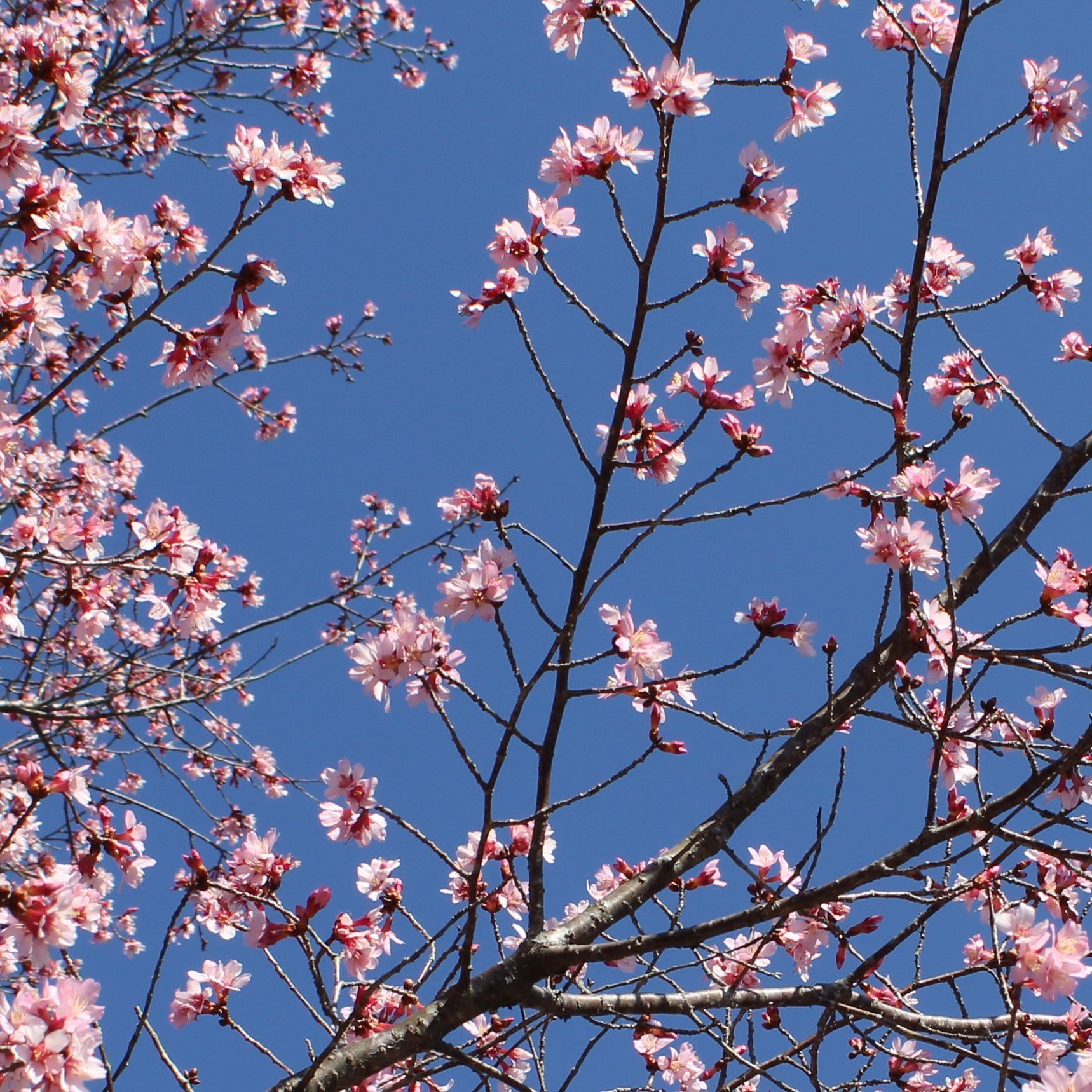April
In my experience, April is a natural time for beginnings. I was born in April, in 1957, met my wife in April of 1978, and began my career at The North Carolina Arboretum in April of 1990. As regards horticulture, in this part of the world April is when the growing season is undeniably underway. In March we see the stirrings here and there, but in April just about any plant that's still in the game of life begins to show proof in the form of breaking buds, emerging leaves, and, for many, the display of ephemeral flowers. April is the month when even folks who are not so attuned to nature take notice of what's happening in the living world around them.
For those people who enjoy growing plants as a pastime, this month reinvigorates their interest and they're off to the garden center to buy seeds and starts, fertilizer and mulch. For plant professionals, much of the activity in preparation for the new growing season has already occurred and now the business at hand concerns bringing along the new crop, whatever it is, and protecting vulnerable young plants from the vicissitudes of a month known for sometimes brutal transition. T.S. Eliot declared, "April is the cruelest month," and although he was speaking poetically, metaphorically, if you're a plant person sometimes April will indeed break your heart. In the first week of April 2007 the state of springtime plant development in our region was approximately one month ahead of schedule. In the landscape, Japanese maples were covered with tender young foliage and our native dogwoods were in full bloom. Then on April 7, Easter eve, the temperature plummeted into the twenties, producing a heavy frost and hard freeze. In the warming hours of the next day the damage was everywhere to be seen: wilted leaves and drooping flowers, not just on Japanese maples and American dogwoods, but on most plants that happened to be in a similar state of development. In the days following that sudden reversion to wintertime temperatures, the many hues of springtime green were dulled with a pall of sickly brown, and there under the blissfully blue and sunny April sky it was a depressing sight to see. Most of the affected plants eventually recovered. Some lost branching and those that were in flower produced no fruit (virtually all of the South Carolina peach crop was ruined that year), but for a while the hopefulness of spring was shattered and it felt so bad. We hope not to have such a disappointment this year.
Actually, we already have had a similar event take place the second weekend of March. Thankfully it was on a much smaller scale because fewer plants had broken dormancy at that point. All the preceding week the temperatures had been in the upper sixties, even reaching the low seventies that Friday, and then on Saturday night the temperature fell to fifteen degrees. In the bonsai garden our earliest bloomers were already showing off. The 'Fair Elaine' ornamental cherry in the lower level and the daffodils and Siberian squill scattered elsewhere throughout the garden were just starting to hit their flowering stride, and although they were out perhaps just a bit earlier than usual it was not egregiously so. These are plants that by their early blooming nature are adapted to withstand some colder weather and so are seldom much bothered by a temporary return to winter conditions. Daffodils are sometimes seen poking their cheerful faces up from under a blanket of snow. But this year the temperature shift was apparently too extreme, and even these reliably hardy early flowering favorites took a hit.
‘Fair Elaine’ Cherry (Prunus incisa ‘Fair Elaine’) looking good in the lower level of the garden before the cold returned.
Siberian squill (Scilla siberica) was unaffected
As for the bonsai collection, no damage was sustained. In the hoop house there were numerous bonsai just starting to actively grow, but they were protected enough to come through the event unperturbed. The hoop house, for those who may be unfamiliar, is a 100-feet long, quonset hut-like structure, which from the end of November to the end of April is covered with white polypropylene sheeting. The majority of our temperate bonsai specimens are stored there during the winter season. There is no supplemental heating in the hoop house, but by design it mitigates the winter weather conditions, providing a more moderate and stable environment for the plants it houses. The plastic covering eliminates the effect of wind, a major concern for containerized plants, and traps radiant heat from the earth, providing a few critical degrees of difference between the air temperature inside and outside the house.
Inside the hoop house plants are growing
Temperate bonsai in the Arboretum's collection that are not stored in the hoop house are kept in a walk-in refrigerator, located in the basement of the bonsai garden pavilion. This cooler offers ideal conditions for overwintering containerized temperate plants. The temperature is controlled to remain above freezing but below forty degrees, so plants are kept fully dormant but face no threat of damage from excessive cold. There are overhead lights in the cooler, but they are for when a person wants to go in there for some reason, and not for the benefit of the plants. Typically, the plants sit in complete darkness when stored in the cooler, a period of about five months. Even "evergreen" temperate plants, needle and broadleaf, can be kept so because they are fully dormant at that temperature, and do not photosynthesize. It is still necessary to monitor the plants for water needs, but watering is infrequent.
In the cooler under the pavilion plants still sleep
I would store all of our temperate bonsai in the cooler if it was big enough, because it's the safest place for them. Plants in there can sleep in peace while the unpredictable and sometimes calamitous weather of April sorts itself out.





